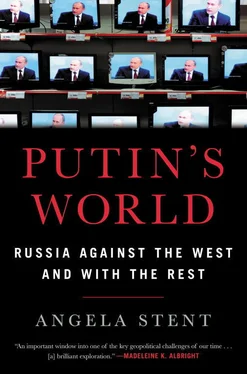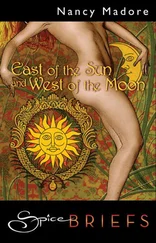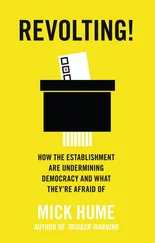But Gorbachev’s visit came at the worst possible time. China was in turmoil, and it was the height of the student pro-democracy movement. A welcoming ceremony in Tiananmen Square, in sight of Mao’s mausoleum, had to be cancelled because of the thousands of protestors camped out on the square. Worse still for the Chinese hosts, the protestors saw Gorbachev as their hero because of his commitment to glasnost. Notwithstanding, talks between the eighty-four-year-old Deng and fifty-eight-year-old Gorbachev went well. 21The historic enemies had been reconciled. 22Shortly after Gorbachev left, Chinese troops took up their positions in Tiananmen Square, and two weeks later, the Chinese authorities cleared the area.
During Gorbachev’s last years in office, Sino-Soviet ties continued to improve. Talks on regularizing the 2,600-mile border produced results. But the past was always present. During a trip to China to sign border agreements, Foreign Minister Eduard Shevardnadze met with Deng Xiaoping, by then an elder statesman. After praising the border agreement, Deng led the Soviet foreign minister into a room where a map of China lay on the table. The map showed Outer Manchuria, which forms the Russian Primorsky Krai province, as Chinese, not Russian, territory. 23
Gorbachev remains an ambivalent and controversial figure in China. He took the necessary steps to defuse tensions and end the Sino-Soviet split on Chinese terms. But his reform policies and the collapse of oil prices and the economy led to the disintegration of the USSR and of Soviet socialism. Indeed, during the three-day August 1991 coup attempt against Gorbachev, the Chinese supported the anti-Gorbachev putschists. Deng’s verdict was that Gorbachev had not done enough to preserve state and party power. 24In 1992, a Chinese leader described the Soviet collapse as “like the aftermath of an explosion—shock waves in all directions.” 25
The Chinese remain determined that this will not happen to them. They believe Gorbachev’s cardinal error was opening up society politically and loosening the reins of control instead of focusing on economic reforms. China took the opposite course and by now has a far larger and more successful economy than does Russia, while the Communist Party remains in full control. Vladimir Putin agrees. He has said that the USSR should have done what China did and introduced economic reforms before opening up politically. The implication is that if Gorbachev had followed that path, then maybe the USSR would still exist. 26
In 1949, Stalin told one of Mao’s top lieutenants, Liu Shaoqi, “I sincerely hope that one day the younger brother will catch up with and surpass the elder brother. This is not only the hope of my colleagues and me; this is the historical rule: the latecomers will eventually surpass the advanced ones. Let’s toast to the younger brother surpassing the elder.” 27The younger brother has indeed overtaken the elder brother, as Stalin predicted.
NORMALIZATION CONTINUES—THE YELTSIN YEARS, 1992–1999
Boris Yeltsin’s main foreign policy focus was on the West. Nevertheless, the new Russian leadership soon accepted that it had to continue on the path toward normalization with Beijing. 28The Russian leadership realized that it had to accept the one-China policy even as it sought to improve economic links with Taiwan. During Yeltsin’s tenure, the border issues that continued to plague the relationship were gradually settled, and economic ties—including military sales—increased. Russia was at first wary of fully endorsing China’s calls for a multipolar world. But when Yevgeny Primakov became foreign minister in 1996, Russia’s foreign policy focused more on balancing between West and East, and China began to occupy a more prominent place in the Kremlin’s priorities. But the new pluralism and decentralization of the Yeltsin era also posed new challenges for the Kremlin’s China policy: officials in the Russian Far East were wary of what were called Chinese “shuttle traders,” who came across the border and began to dominate the local market. Once the border opened up, the number of Chinese laborers in the Far East ranged from 300,000 to 1 million, depending on whose estimates one believed.
Yeltsin made his first presidential visit to Beijing in December 1992, although he had to cut it short because of a political crisis at home when acting prime minister and chief economic reformer Yegor Gaidar was ousted. Joking that the number of bilateral agreements they did sign during their truncated meeting might qualify for the Guinness Book of World Records, Yeltsin announced, “We agree that the long period of artificial cold war is now over, and we are now entering a new stage of de-ideologized relations.” 29Russia and China pledged not to enter into alliances or treaties that would hurt the other’s “state sovereignty and security interests.” Indeed, this first visit set the foundation for the relationship going forward.
This new bilateral relationship focused on economic ties, regulating border issues, and noninterference in each other’s domestic affairs. China and Russia both faced separatist challenges—Tibet and Xinjiang for China and Chechnya for Russia. Beijing supported Yeltsin’s Chechen campaign, saying the Russian leader had to wage war in order to preserve the country’s unity.
The Chinese remained wary of the unpredictability of the early Yeltsin years and of its pro-Western policies. But the newly porous borders required attention. As PRC president Jiang Zemin noted, “When a door is opened, people can come into a room, but flies can get in too. We must go about this in such a way that there will be fewer flies.” The delimitation of the Russo-Chinese border was achieved through a series of arrangements in the 1990s. But the collapse of the USSR had left China with a series of new Central Asian neighbors too. China also faced the challenge of dealing with extremism and Islamic movements emanating from the Uighur population in Xinjiang, which shares a border with Russia and several Central Asian countries. In 1996, Russia, China, Kazakhstan, Kyrgyzstan, and Tajikistan—the “Shanghai Five”—signed a border pact and pledged not to attack each other. This was the beginning of multilateral cooperation and an attempt to regulate Sino-Russian relations in Central Asia. For the newly independent nations of Central Asia, the need to navigate relations with their two large neighbors would be a permanent challenge.
Russia’s relations with China were always linked to its fluctuating ties to the West. After Yevgeny Primakov became foreign minister, he advocated creating a “strategic triangle” among Moscow, Beijing, and New Delhi to counterbalance the transatlantic alliance. In 1997, Yeltsin and Jiang signed the Joint Declaration on a Multipolar World and the Establishment of a New International Order. 30This declaration contained themes that have become the standard talking points of Sino-Russian relations since then: equal partnership, strategic cooperation, a multipolar world, and the need to develop a “new and comprehensive form of security.” Although neither the United States nor NATO is explicitly mentioned, it was clear at whom this declaration was directed.
As ties with the United States soured over NATO’s intervention in the Balkan wars, Yeltsin’s own pronouncements also began to reflect greater criticism of the West and more praise for China. During the Kosovo War, US planes mistakenly dropped five bombs on the Chinese embassy in Belgrade, killing three people and causing an outcry in Beijing and beyond. The Chinese did not believe it was a mistake. Both Russia and China loudly condemned NATO’s actions in Serbia. 31
This new anti-American dimension of Russia’s China policy was on full display during one of Yeltsin’s last public appearances as president. On a visit to Beijing in December 1999, he lashed out at President Clinton, who had criticized Russia for launching the Second Chechen War, saying of the US president, “He evidently forgot for a second, a minute, or half a minute just what Russia is, and that Russia possesses a full arsenal of nuclear weapons…. A multipolar world—that’s the basis of everything. That’s what we agreed on with Jiang Zemin.” Interestingly, his heir-apparent then prime minister Vladimir Putin felt it necessary at that point to correct Yeltsin and deny that there had been any cooling in US-Russia relations. 32
Читать дальше












